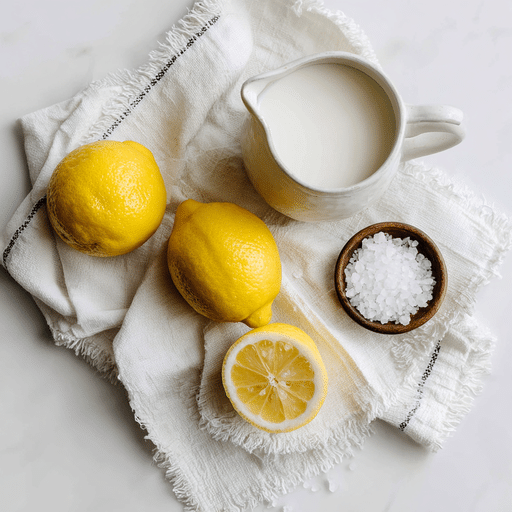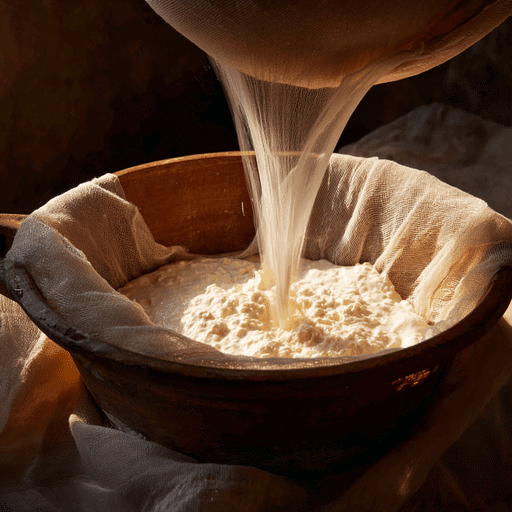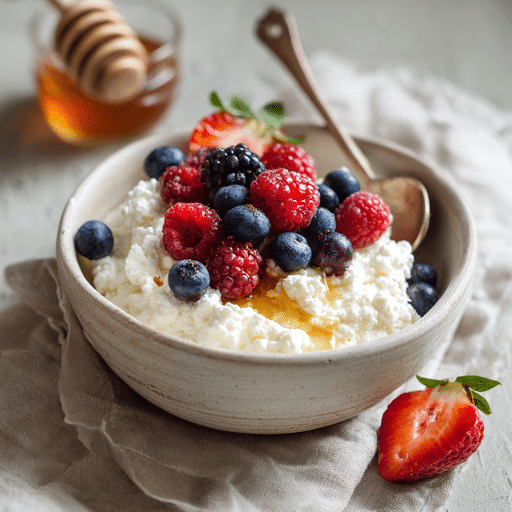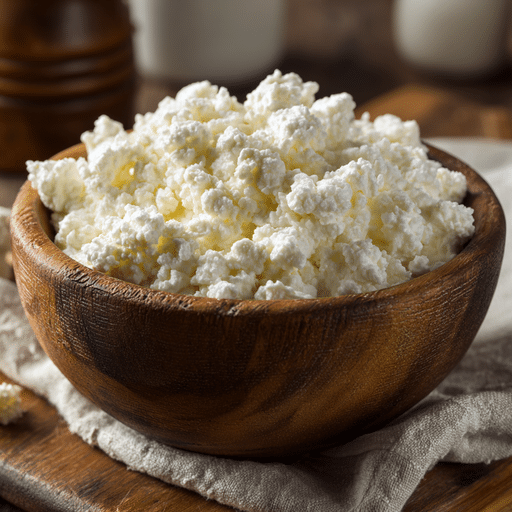How to make cottage cheese from scratch? It’s easier than you think — and you don’t need fancy tools or rare ingredients. With just milk, a little vinegar or lemon juice, and some salt, you can turn your kitchen into a mini creamery. Homemade cottage cheese tastes fresher, feels lighter, and gives you full control over the flavor and texture. Whether you’re cutting processed foods or simply love a good DIY recipe, this guide shows you exactly how to make cottage cheese step by step. From curdling to storing, every detail’s here — so let’s skip the confusion and start making cheese.
How to Make Cottage Cheese at Home
Why learning how to make cottage cheese is worth it
How to make cottage cheese might sound intimidating, but it’s one of the easiest, most rewarding kitchen skills you can learn. Forget ultra-processed tubs filled with preservatives. Making your own cottage cheese gives you control — over ingredients, salt content, and texture. You get real flavor from real food.
When I first tried it, I wasn’t sure it would work. But the moment I added lemon juice to warm milk and saw those first curds forming — I was hooked. It felt old-school in the best way. Pure. Intentional. And honestly? A little bit magical.
The beauty of homemade cottage cheese is that you don’t need fancy ingredients or equipment. If you’ve got milk, vinegar or lemon juice, and a pinch of salt, you’re halfway there. And once you’ve made your first batch, you’ll wonder why you didn’t start sooner.
Just like in our healthy cottage cheese cookie dough, real food doesn’t have to be complicated or dull.
Ingredients that make all the difference
You only need three basic ingredients:
- 1 gallon of milk
- ¾ cup of vinegar or lemon juice
- 1 tsp of salt
Optional: ½ cup of cream for added richness
Use whole milk if you want a creamy result, but 2% or skim also work. The acid curdles the milk into soft, flavorful curds, while the salt enhances the mild tang. No gums. No stabilizers. Just fresh, fluffy cheese — perfect with fruit, over toast, or even with something like our avocado toast nutrition ideas for a savory protein boost.
This isn’t just a recipe. It’s a shift. A way to slow down and savor food that’s made to be felt, not just eaten.
Step-by-Step — How to Make Cottage Cheese the Right Way
The curdling process made simple
Now that you’ve gathered your ingredients, it’s time to get into the process of how to make cottage cheese at home. Don’t overthink it — the science is simple: heat, acid, and a little patience.
Start by pouring 1 gallon of milk into a heavy-bottomed pot. Gently heat it to 190°F, stirring occasionally to avoid scorching. Once you hit that temperature, turn off the heat. This is when the magic happens.
Stir in ¾ cup of vinegar or lemon juice. You’ll instantly notice curds beginning to separate from the whey. Cover the pot and let it sit, undisturbed, for 30 minutes. This rest gives the acid time to fully separate the milk solids, which is exactly what you want.
If you’re unsure about temperatures or timing, think back to the same focus we use in our banana coffee recipe — it’s not about perfection, but care in every step.

How to control texture: wet vs. dry
Once the curds have set, line a colander with cheesecloth and place it over a large bowl. Spoon the curds into the cloth and let the whey drain naturally for 30–45 minutes.
If you like a drier cottage cheese (similar to ricotta or feta), let it drain longer. If you prefer it creamier, rinse the curds briefly under cold water, squeeze gently, and mix in a bit of cream to finish. This step lets you create your ideal texture — no additives needed.
That’s the beauty of making cottage cheese at home: it adapts to you. Want it fluffier? Add cream. Want it firmer? Drain more. It’s a flexible process, like our peach fruit syrup: simple ingredients, smart results.
How to Make Cottage Cheese Taste Even Better & Last Longer
Boosting flavor the clean way
Once you’ve drained your curds, you get to decide how how to make cottage cheese taste exactly how you like it. Most people just toss in salt and call it a day — but when you make it yourself, you have room to get creative. Stir in roasted garlic, fresh dill, chopped scallions, or a touch of smoked paprika for savory depth. Want it sweet? Try a dash of maple syrup and cinnamon. That’s the kind of food flexibility we love at Sweetain.
Break the curds gently with a spoon or fork, stir in about 1 teaspoon of salt, and taste. You can add 2 tablespoons of cream at a time for a smoother texture — just like we balance flavors in our labubu cake without overpowering sweetness.
Homemade cottage cheese doesn’t just beat store-bought on freshness. It’s also an ideal vehicle for bold, natural flavors you actually crave — without hidden ingredients.
Storage tips + 2 game-changing ideas they don’t tell you
Here’s where most blogs stop — but we’ll take you further. Yes, you should store your cottage cheese in an airtight container and flip it upside down in the fridge to reduce bacteria exposure. But here are two extras:
- Strain whey separately and reuse it: That leftover whey isn’t trash — it’s a protein-rich goldmine. Use it in smoothies, soups, or even baking. It adds nutrition and flavor. (We blend it right into protein drinks like our vanilla protein shake recipe).
- Infuse it while it chills: Want real flavor? Drop a sprig of rosemary or a smashed garlic clove into the container while it chills. It infuses subtle aroma without overpowering the curds.
Stored right, your homemade batch will stay fresh for 5–7 days. But trust me — it won’t last that long in a house that knows how to enjoy good food.

Why Homemade Cottage Cheese Wins — And How to Use It
Homemade vs. Store-bought: What’s the real difference?
Let’s be real — store-bought cottage cheese has convenience on its side. But once you taste the homemade version, it’s hard to go back. Here’s why:
- Freshness: Homemade tastes milder and more balanced — no sour aftertaste.
- Control: You decide how salty, creamy, or dry it is.
- Clean Ingredients: Just milk, vinegar, and salt. That’s it. No gums, starches, or preservatives.
- Price: Making your own often costs half as much per serving.
Once you’ve learned how to make cottage cheese, you unlock a skill that delivers long-term value. Plus, you can adapt it to fit your lifestyle — keto, low-sodium, high-protein, whatever your thing is. We love that kind of flexibility, just like we highlight in our fibre maxxing recipe for smart gut health.
Smart, satisfying ways to use it daily
You’ve made it. Now what? Try these uses:
- Sweet: Mix with honey and berries for a quick breakfast.
- Savory: Add to omelets or spread on toast with tomato and basil.
- High-protein snack: Blend it into our healthy cottage cheese cookie dough for a guilt-free treat.
- Meal builder: Use it instead of cream cheese or ricotta in lasagna or wraps.
The point is — cottage cheese doesn’t have to be boring. With your homemade version, it becomes a base for flavor, texture, and nourishment. And the more you use it, the more ideas you’ll come up with. It’s one of those feel-good habits that sticks.

Frequently Asked Questions About How to Make Cottage Cheese
1. What kind of milk is best for making cottage cheese?
Whole milk gives the creamiest result, but you can use 2% or even skim if you’re watching fat intake. Raw or pasteurized both work — just avoid ultra-pasteurized milk, which won’t curdle well.
2. Can I make cottage cheese without vinegar?
Yes. Lemon juice works just as well to curdle the milk. It may give a slightly more tangy flavor, which some people prefer.
3. Is homemade cottage cheese healthier than store-bought?
Definitely. When you learn how to make cottage cheese at home, you skip thickeners, stabilizers, and preservatives. You get clean protein, calcium, and just the right amount of salt — all from whole ingredients.
4. How long does homemade cottage cheese last?
It stays fresh in the fridge for 5 to 7 days. Always store it in an airtight container, and for best freshness, flip it upside down to create a vacuum seal (a trick you won’t find on store labels).
5. Can I freeze homemade cottage cheese?
Technically, yes — but we don’t recommend it. The texture breaks down and becomes watery when thawed. If you must freeze it, use small portions and thaw slowly in the fridge, not on the counter.
6. What can I do with leftover whey?
Don’t toss it! Whey is protein-rich and perfect for smoothies, soups, or replacing water in baked goods. It’s a hidden gem from your cheesemaking process.
7. How do I know if it’s gone bad?
Use your senses. If it smells sour or the curds look excessively watery or slimy, it’s best to toss it. Fresh cottage cheese should have a clean, slightly tangy aroma.
Conclusion: Why Making Cottage Cheese at Home Just Makes Sense
Learning how to make cottage cheese isn’t just about cutting back on processed food — it’s about getting closer to the ingredients you use every day. With just milk, vinegar, and salt, you can create something incredibly nourishing, deeply satisfying, and far more personal than anything off the shelf.
At Sweetain, we believe food should feel good, taste real, and work with your lifestyle — even when life is busy. This cottage cheese recipe checks all those boxes. It’s clean. It’s adaptable. And it gives you a base for everything from breakfasts to high-protein desserts.
Want to see how others are enjoying their homemade cheese? Follow us for more simple recipes and everyday food inspiration on Facebook and Pinterest.
So the next time you see that familiar tub at the store, remember — you’ve got something better in your fridge. Made by you. Designed for you. And full of the kind of joy that only comes from real food.


How to Make Cottage Cheese (Fresh, Simple, Satisfying)
Ingredients
Method
- Heat the milk: Pour 1 gallon of whole milk into a large pot and gently heat it over medium heat until it reaches 190°F (88°C), stirring occasionally to prevent scorching.Add acid to curdle: Turn off the heat. Stir in ¾ cup of vinegar or lemon juice slowly and gently. You’ll see curds start to form almost immediately.Let it rest: Cover the pot and let it sit undisturbed for 30 minutes. This allows the curds to fully separate from the whey.Drain the curds: Line a colander with cheesecloth and place it over a large bowl. Carefully ladle the curds into the colander and let the whey drain for 30–45 minutes.Rinse and squeeze (optional): For a milder flavor and softer curds, rinse gently under cold water. Then gather the cheesecloth and squeeze out excess liquid to your desired dryness.Season and finish: Transfer the curds to a bowl. Stir in 1 teaspoon of salt (or to taste). For a creamier texture, mix in ½ cup of heavy cream.Store properly: Place the finished cottage cheese in an airtight container and refrigerate. It keeps for 5–7 days.
Nutrition
Notes
- Use whole milk for the creamiest results, but you can also use 2% or skim for a lighter texture.
- Vinegar or lemon juice both work well — lemon gives a slightly fruitier tang.
- Don’t over-squeeze the curds if you like your cottage cheese soft and moist.
- You can add fresh herbs, garlic, or spices after mixing to personalize the flavor.
- Whey is reusable — add it to smoothies, baking, or soups for a protein boost.
- For longer freshness, store in an airtight container upside down in the fridge.